South Side Speculations

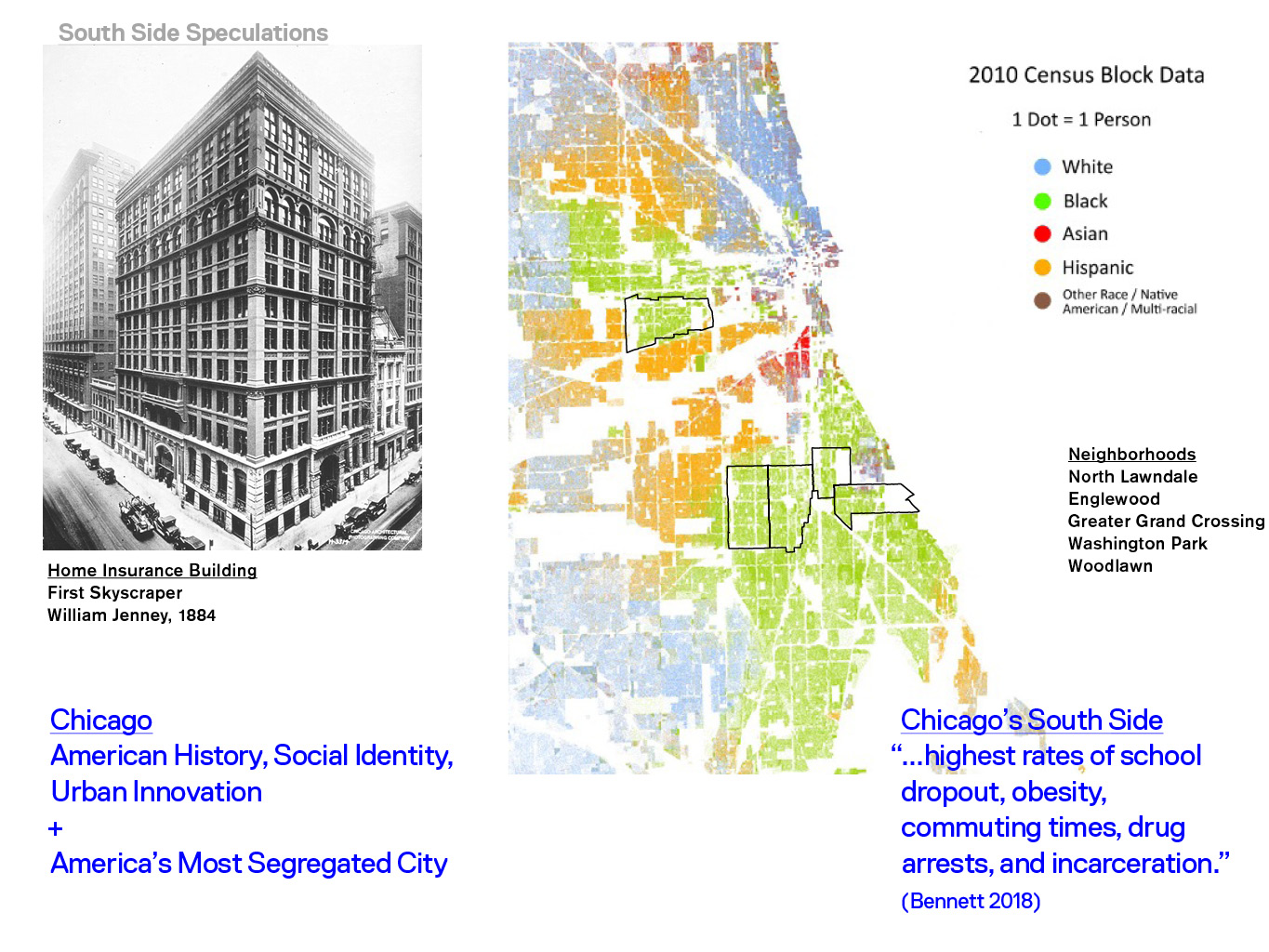
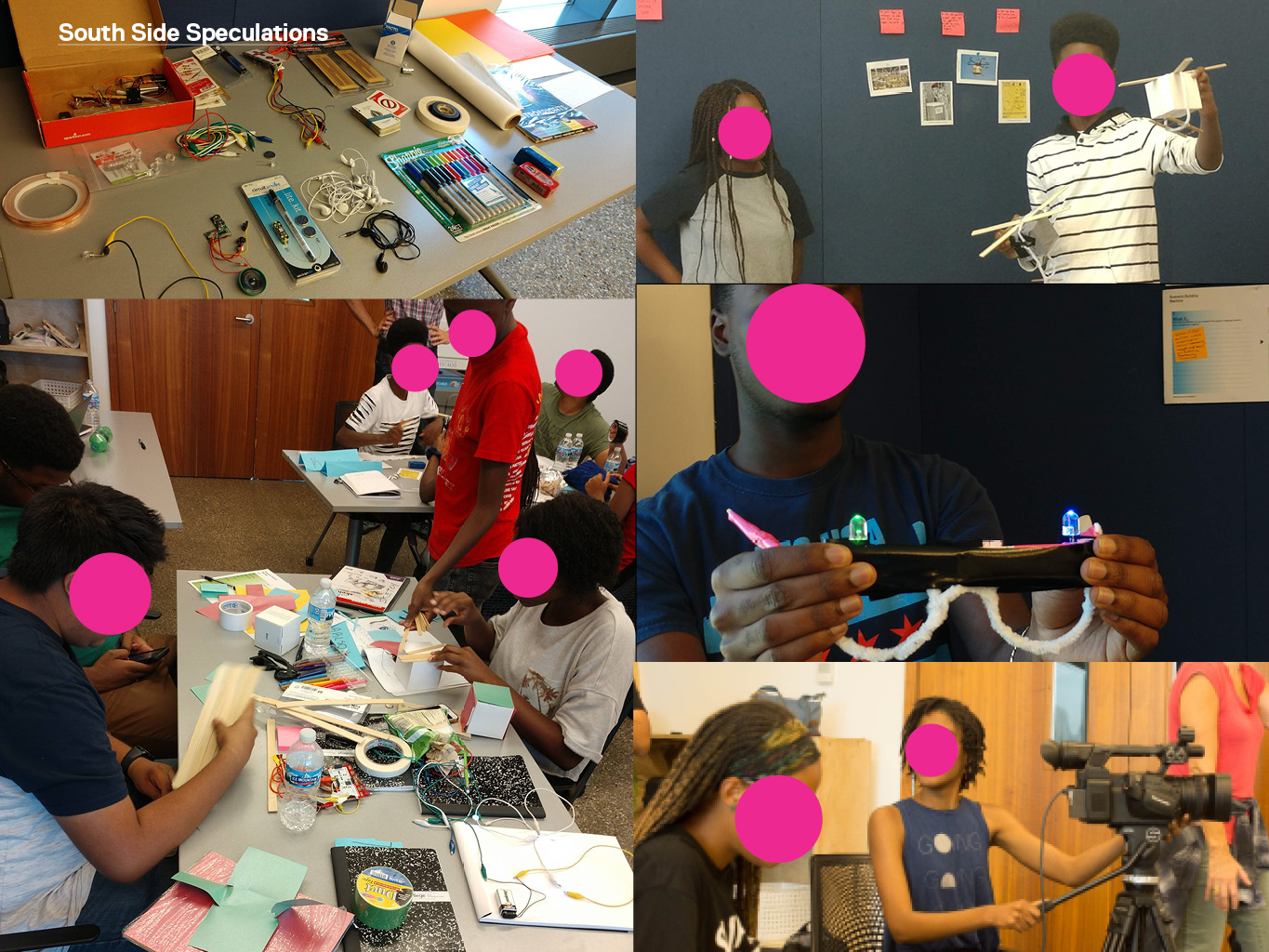

RESEARCH COLLABORATIVE / 2017–2020
Research, Workshop Facilitation, Design in conjunction with Transmedia Collage, with Dr. Patrick Jagoda (University of Chicago) and Dr. Jennifer Brier (University of Illinois at Chicago). Supported by Humanities Without Walls (Mellon Foundation).
Starting in 2017, I began collaboration on Transmedia Collage, a pedagogical model of community engagement undertaken by the Transmedia Story Lab. Eventually, the project expanded into South Side Speculations, a multi-year research project and collection of creative works on Public Histories and Public Futures on Chicago’s South Side.
The core of the work was a curriculum developed and delivered for 23 adolescents over two summers. An interdisciplinary team worked with adolescents from specific neighborhoods on Chicago’s South Side to study “a climate of structural violence [that] has impacted the health and well-being of black and brown teens” (Bennett, et al 2018), to subsequently envision healthier futures for these neighborhoods. Young people learned and practiced methods from oral history, Speculative Design, and various forms of narrative and media production to address issues of race, health, identity, and individual and collective agency.
The two-year curriculum and its resulting media productions—collages, speculative prototypes, and short films—were displayed in multiple public venues on Chicago’s South Side in 2019. These exhibitions were accompanied by programs that brought together residents, scholars, participating young people, and local activists to engage the works produced as new objects (and sites) of discourse for the city and its residents.
NOTE: Some participants images are redacted to protect anonymity.
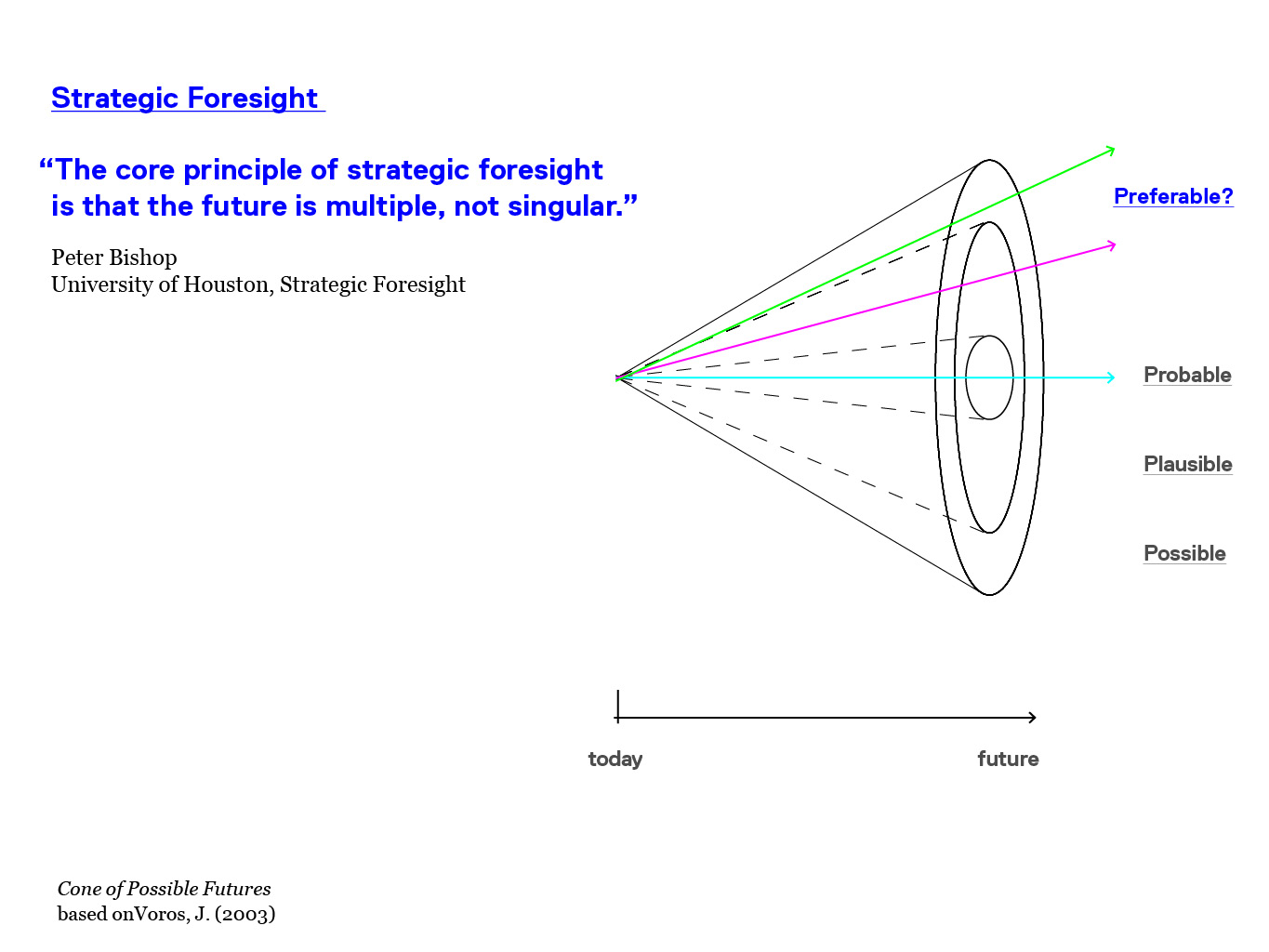

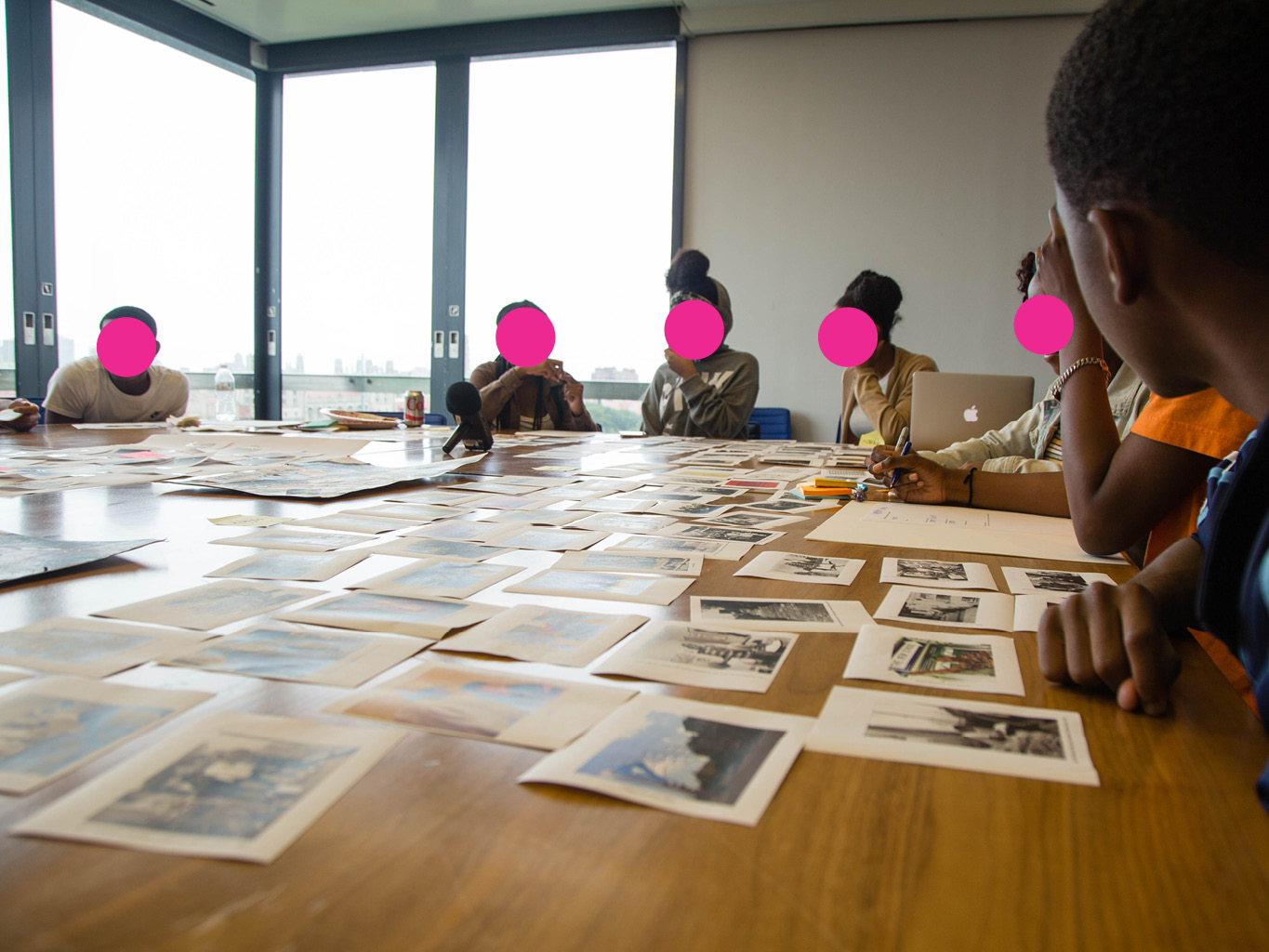
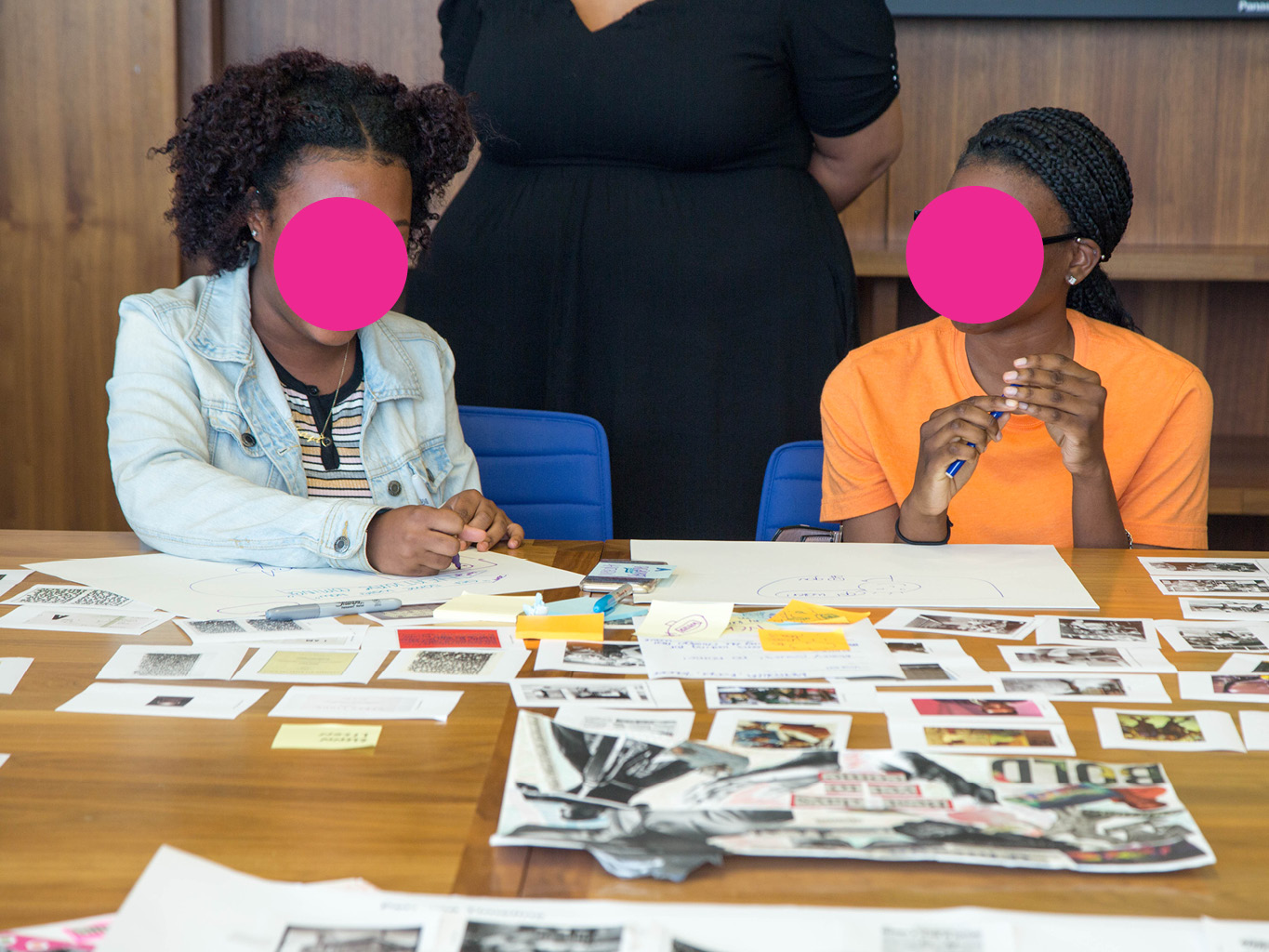
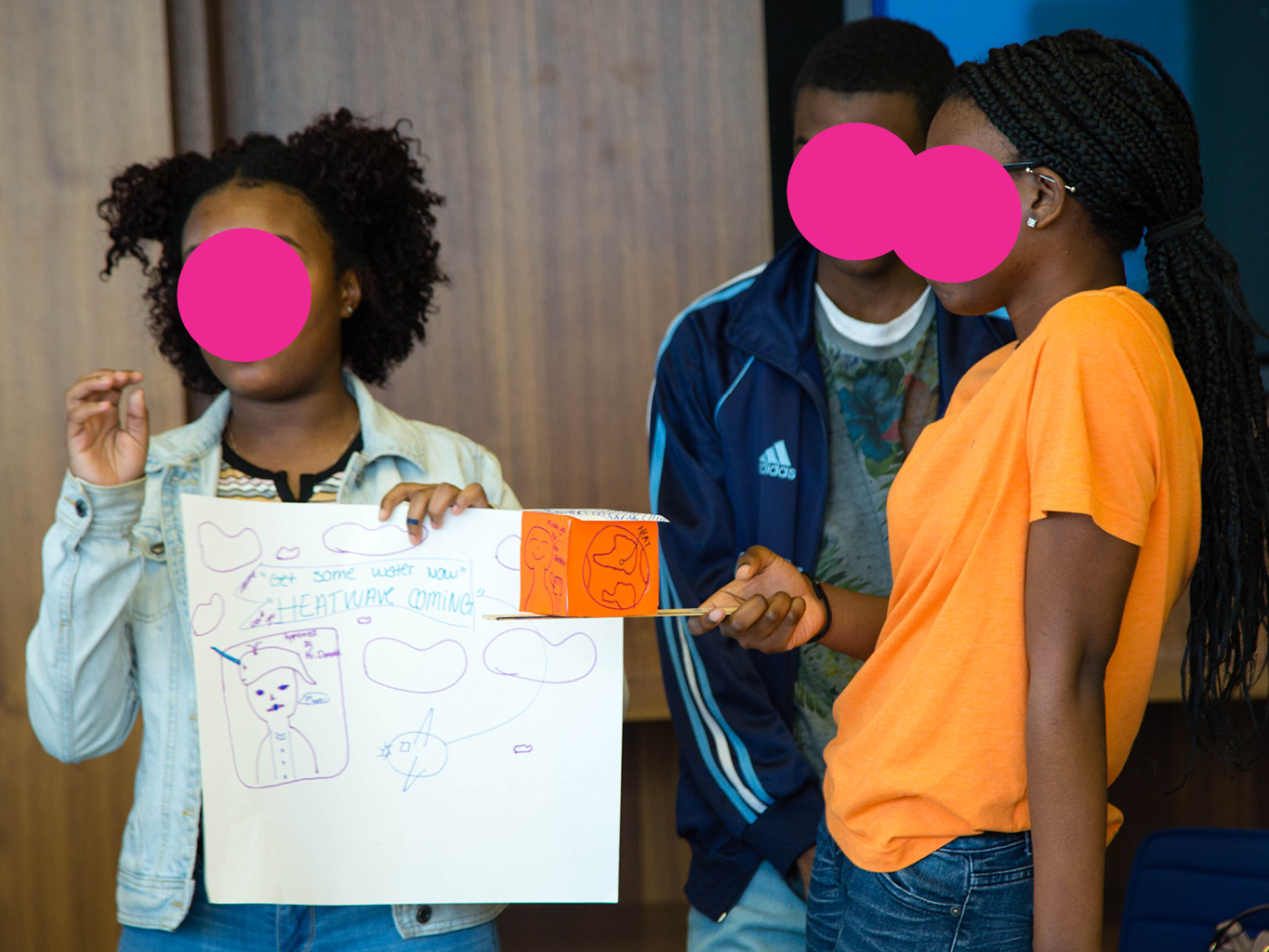
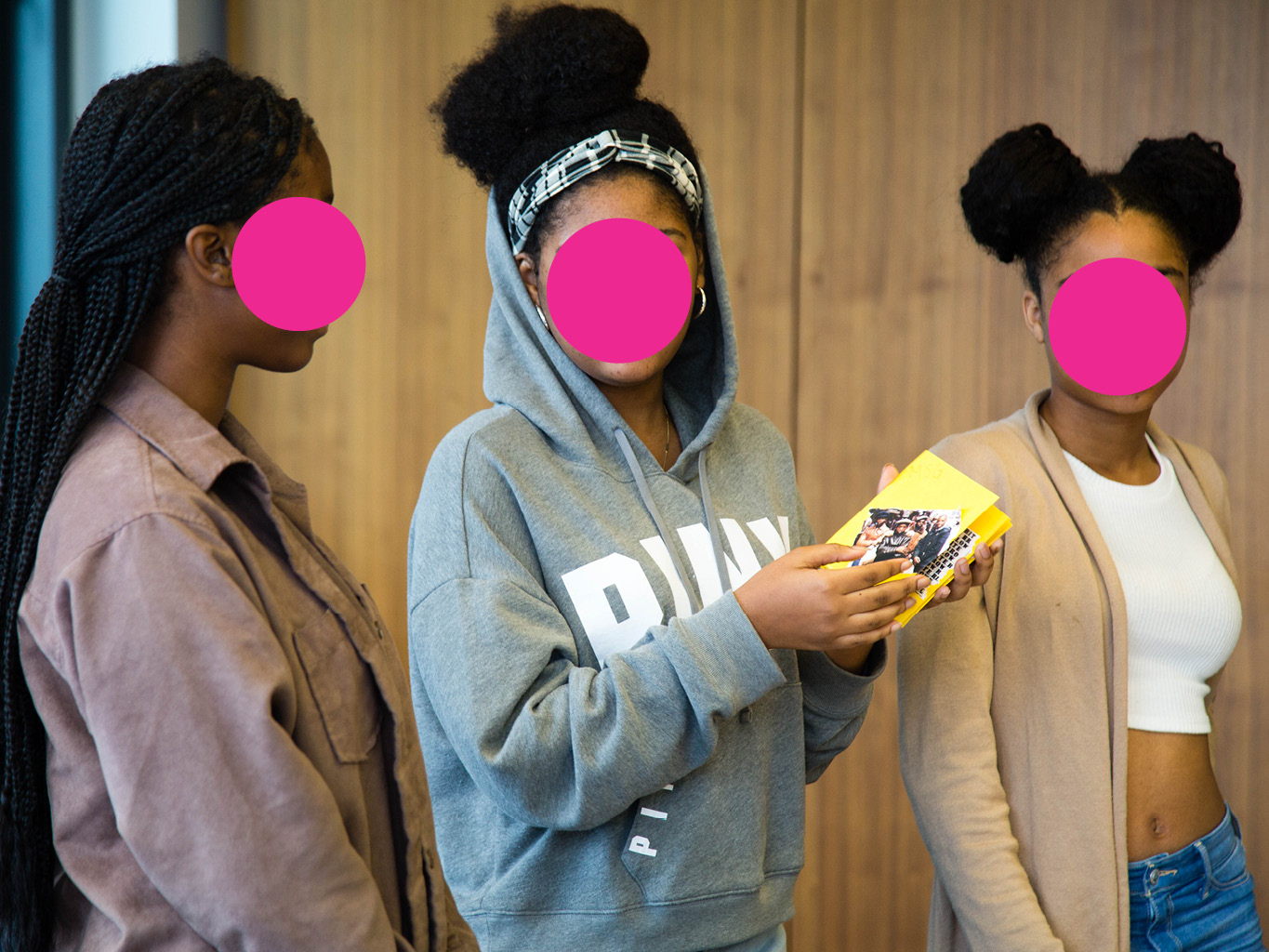
Y1: HISTORY SPECULATIONS WORKSHOP / 2017
Workshop Facilitation in collaboration with Dr. Patrick Jagoda, Ireashia Bennett, Gary Kafer (University of Chicago) and Dr. Jennifer Brier, Jennifer Ash (University of Illinois at Chicago).
During the first summer, participating adolescents created public historical works. They engaged intergenerational research by interviewing elders living in their own neighbourhoods, including family members, to elicit first-hand accounts on neighborhood transitions over three to four generations. Working in small teams, they examined particular historical moments in particular neighborhoods to produce a fictional-historical narrative animating the experiences of people of color during those times.
As a conclusion to the public history curriculum, I organized a one-day Speculative Design workshop to prototype artefacts for use by fictional characters they developed in historical narratives. This workshop engaged a speculative design process uncharacteristically oriented toward the past. The adolescents engaged in core design competencies: developing empathy (designing for someone else), problem-solving (trying to improve the fictional character’s life), and working within constraints (could not make use of technologies or knowledge that did not exist at the time). Prototypes further activated the narratives as they became props which participants could use to role play aspects of their characters’ lives.

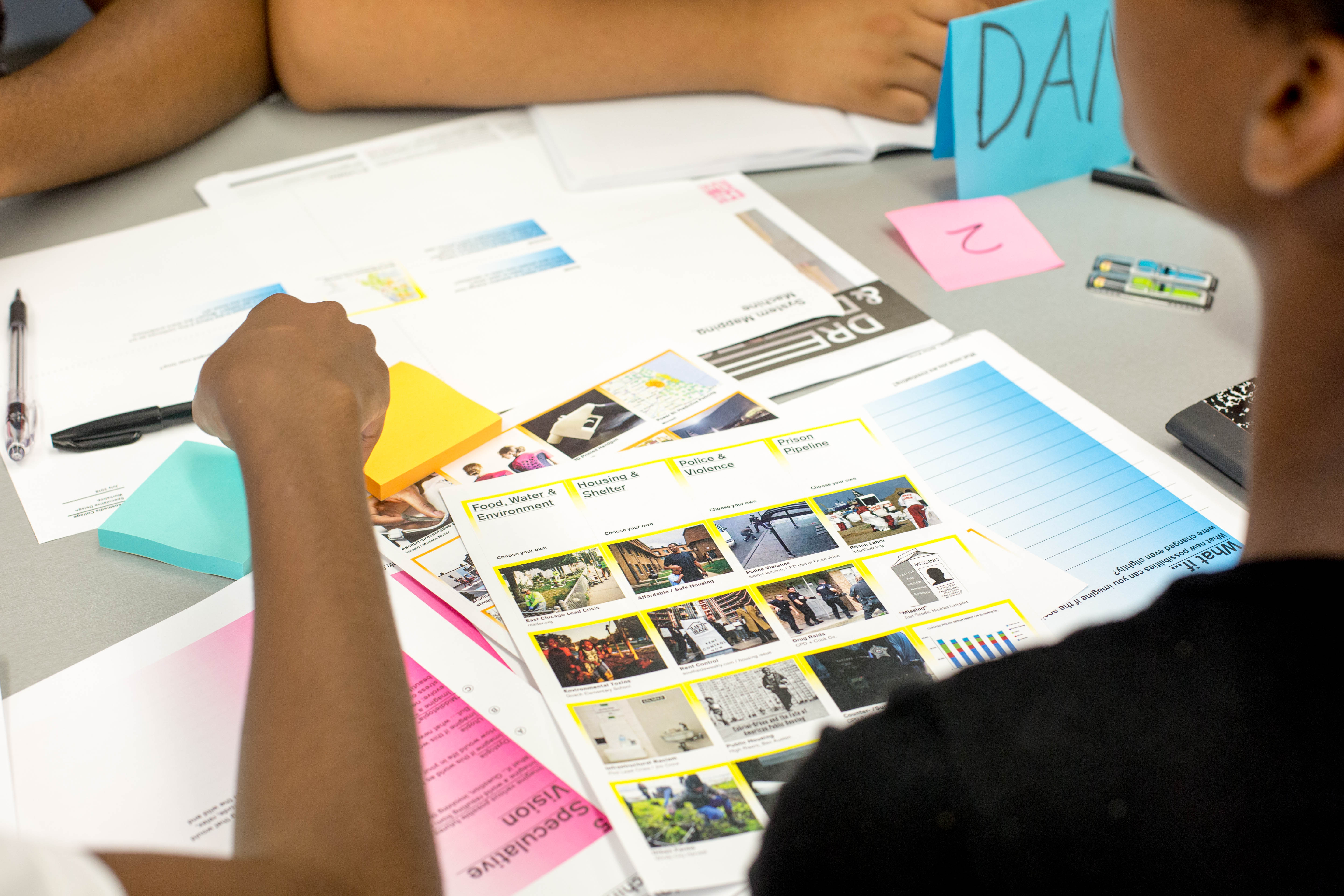

Y2: FUTURE SPECULATION “MACHINES” (WORKSHOP TOOLS) / 2018
Workshop Facilitation in collaboration with Dr. Patrick Jagoda, Ireashia Bennett, Gary Kafer (University of Chicago) and Dr. Jennifer Brier, Jennifer Ash (University of Illinois at Chicago).
In the second week of the Year 2 curriculum, adolescents engaged in a 3-day workshop on Speculative Design that drew on methods from multiple sources. The process was facilitated visually: each activity was guided by a series of worksheets, called “Machines,” with visual inputs and outputs. These exercises were mediated by designers, historians, and media scholars teaching the curriculum.
For this project, I developed a set of customized set of workshop tools—what I called “Machines”—to facilitate the adolescents in a visual and collaborative design process, undertaken by non-designers. THese included the “Systems Mapping Machine,” the “Scenario Building Machine,” the “Character Building Machine,” and the “Experience Mapping Machine.”

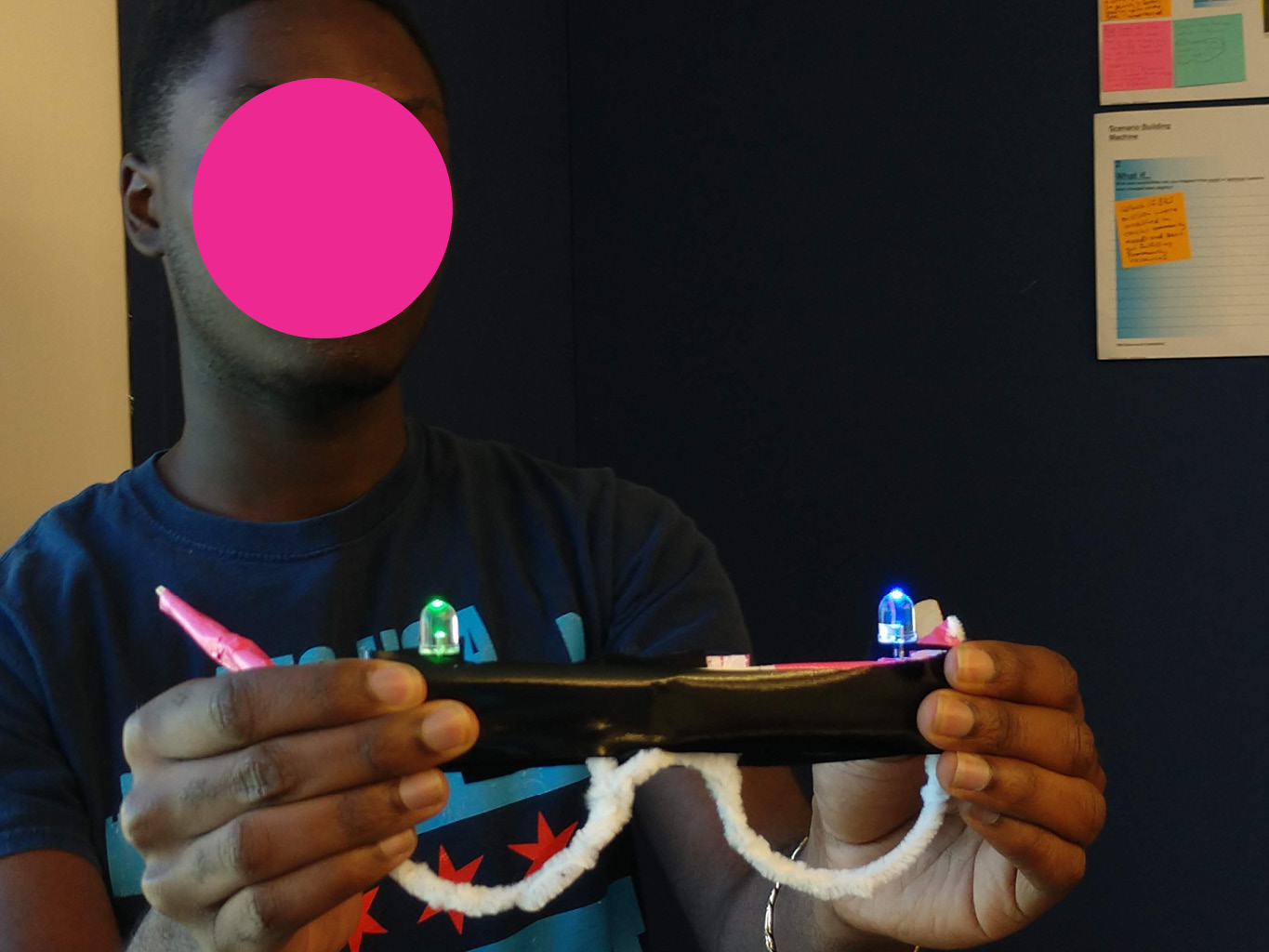

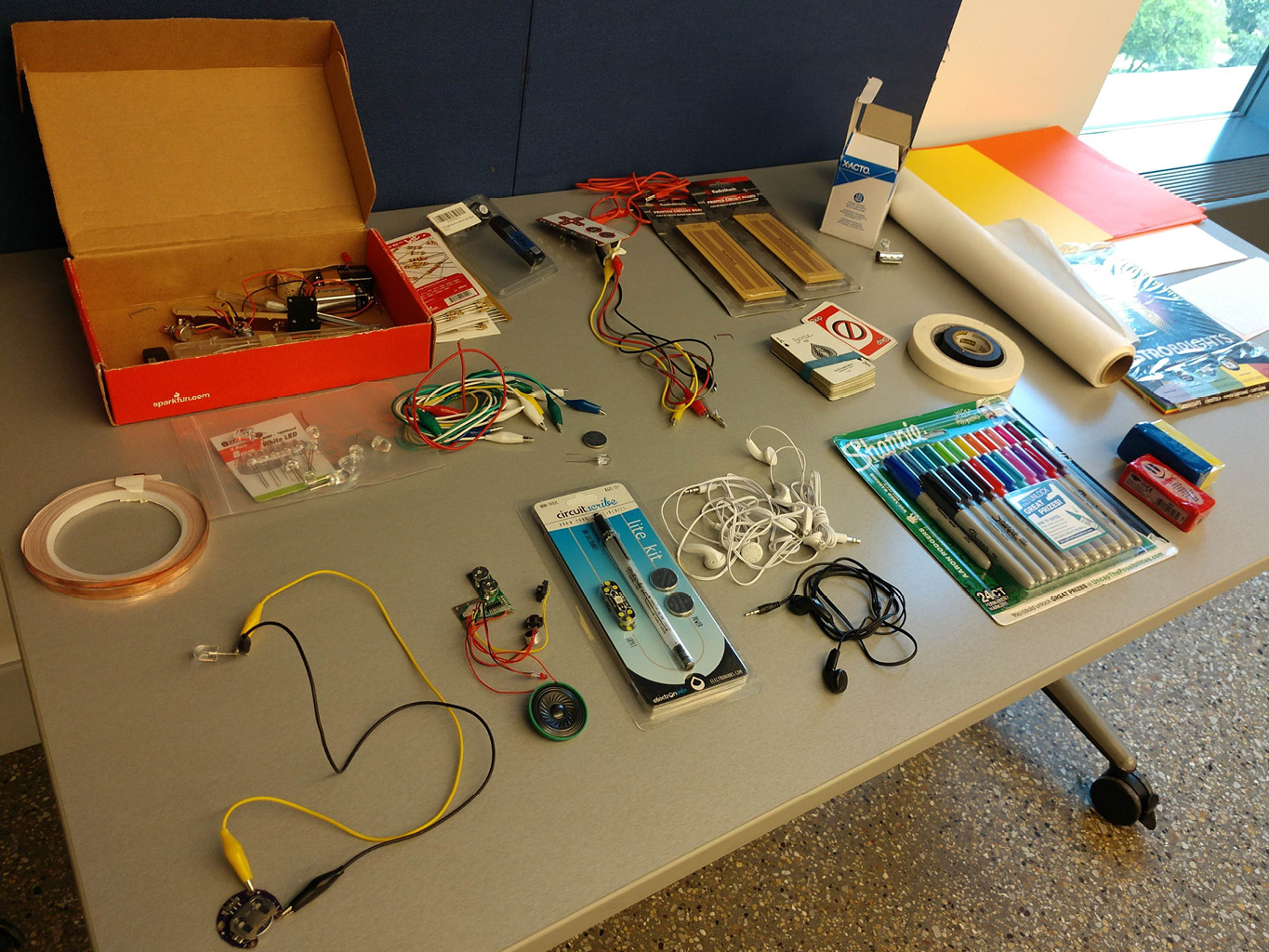
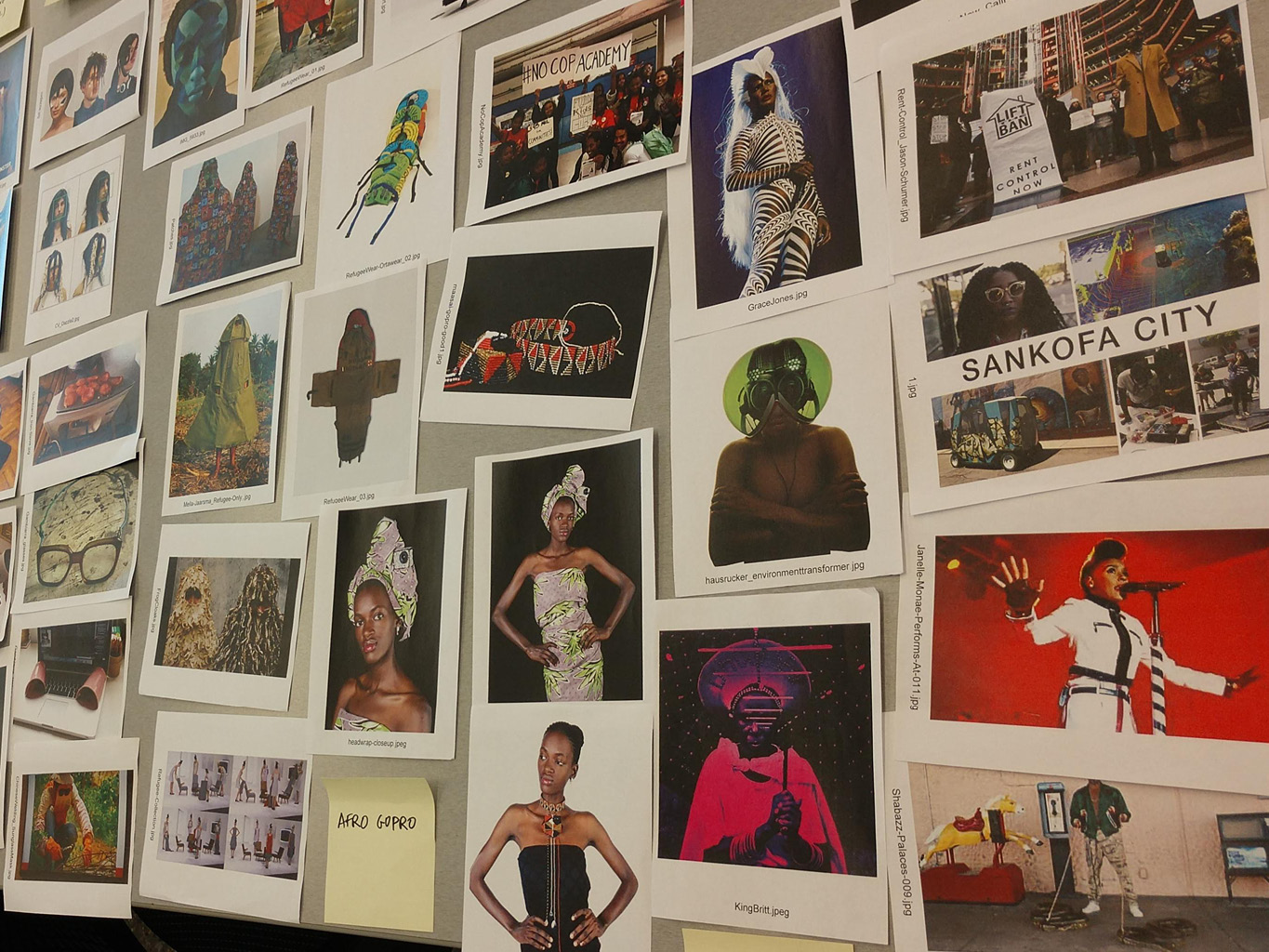
Y2: FUTURE SPECULATIONS WORKSHOP / 2018
Workshop Facilitation in collaboration with Dr. Patrick Jagoda, Ireashia Bennett, Gary Kafer (University of Chicago) and Dr. Jennifer Brier, Jennifer Ash (University of Illinois at Chicago).
Based on Scenarios developed with the “Machines,” participating adolescents were then guided in a rapid prototyping process. The resulting low-fidelity prototypes further animated the future scenarios.
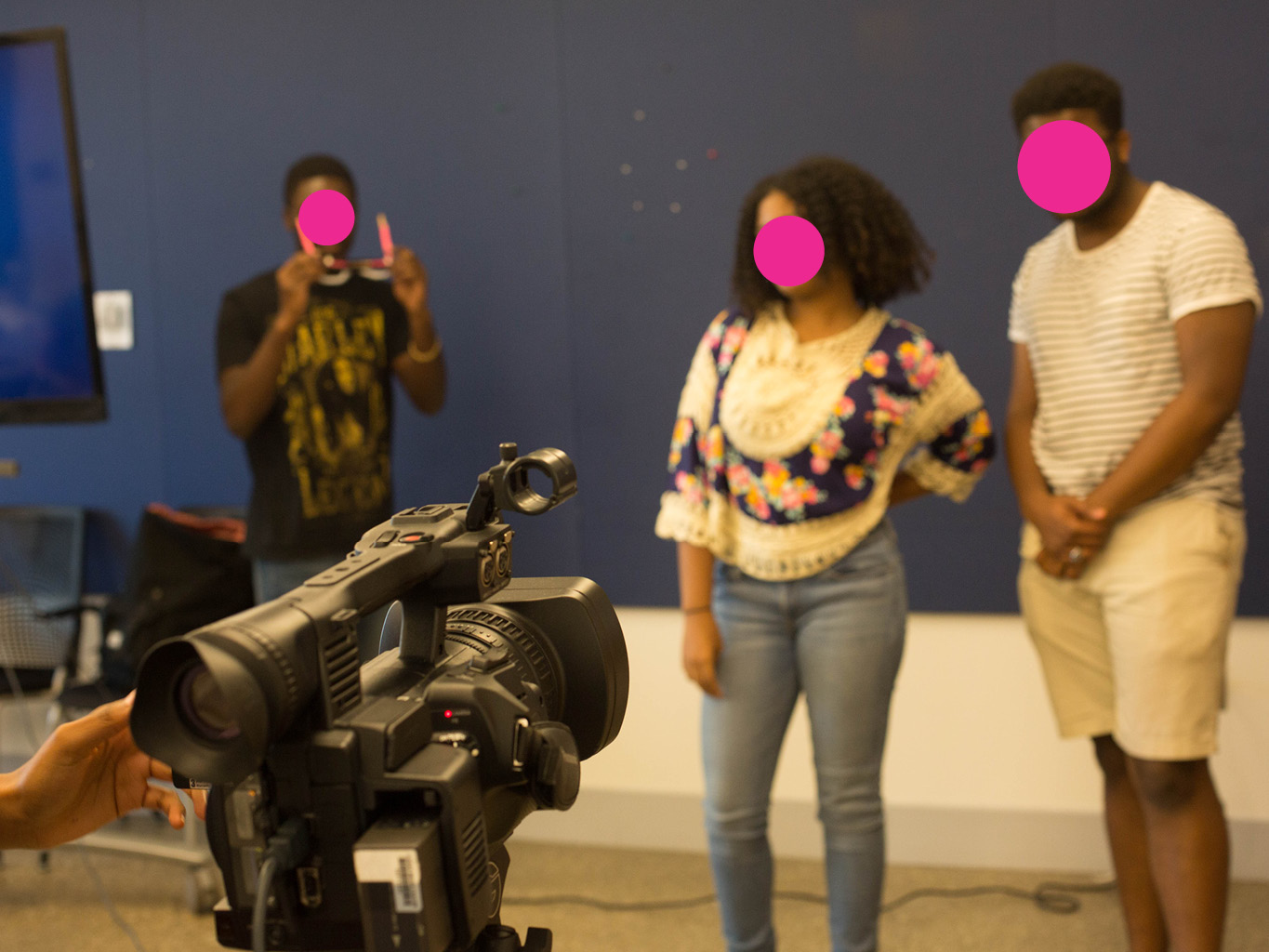
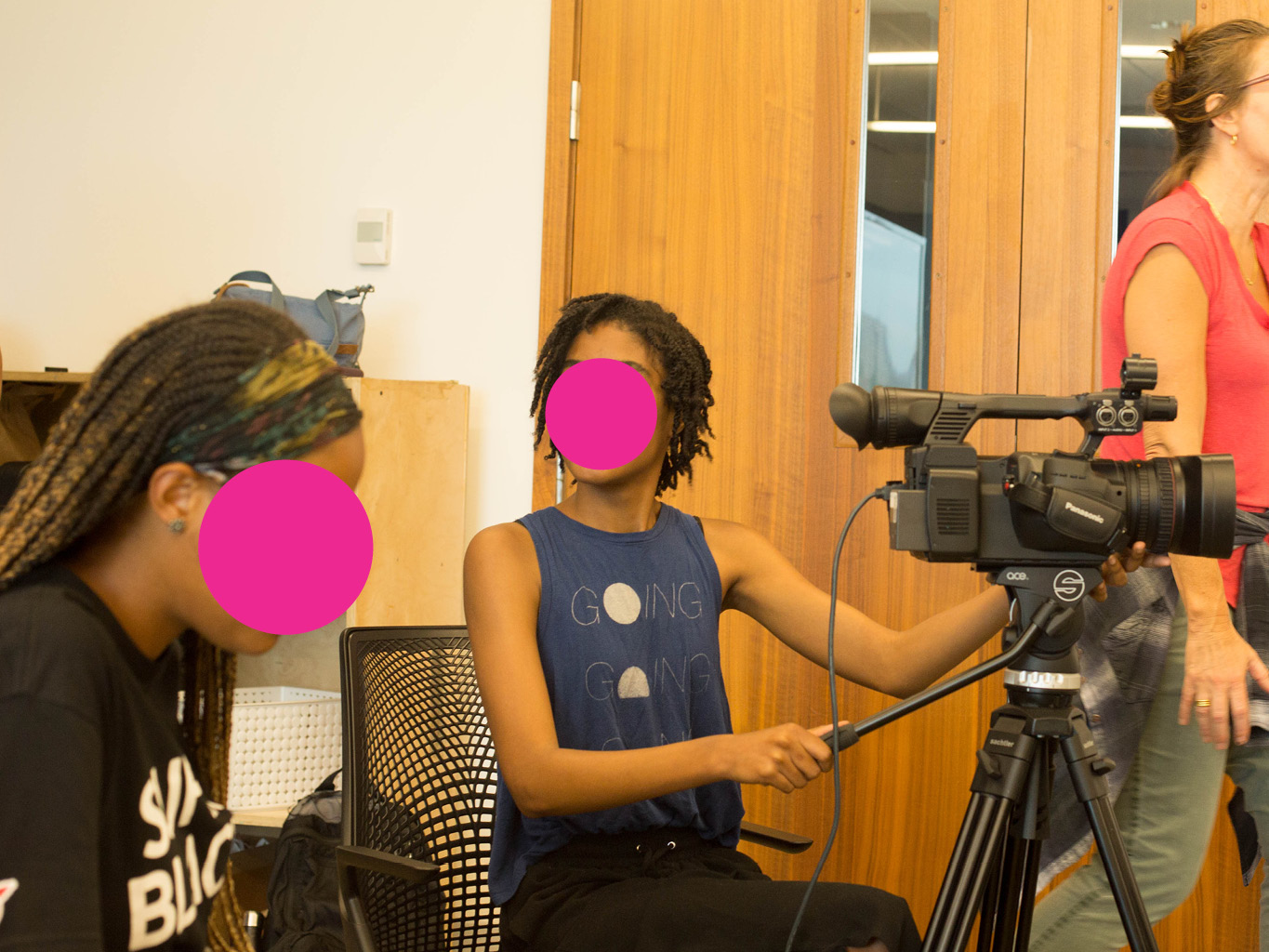
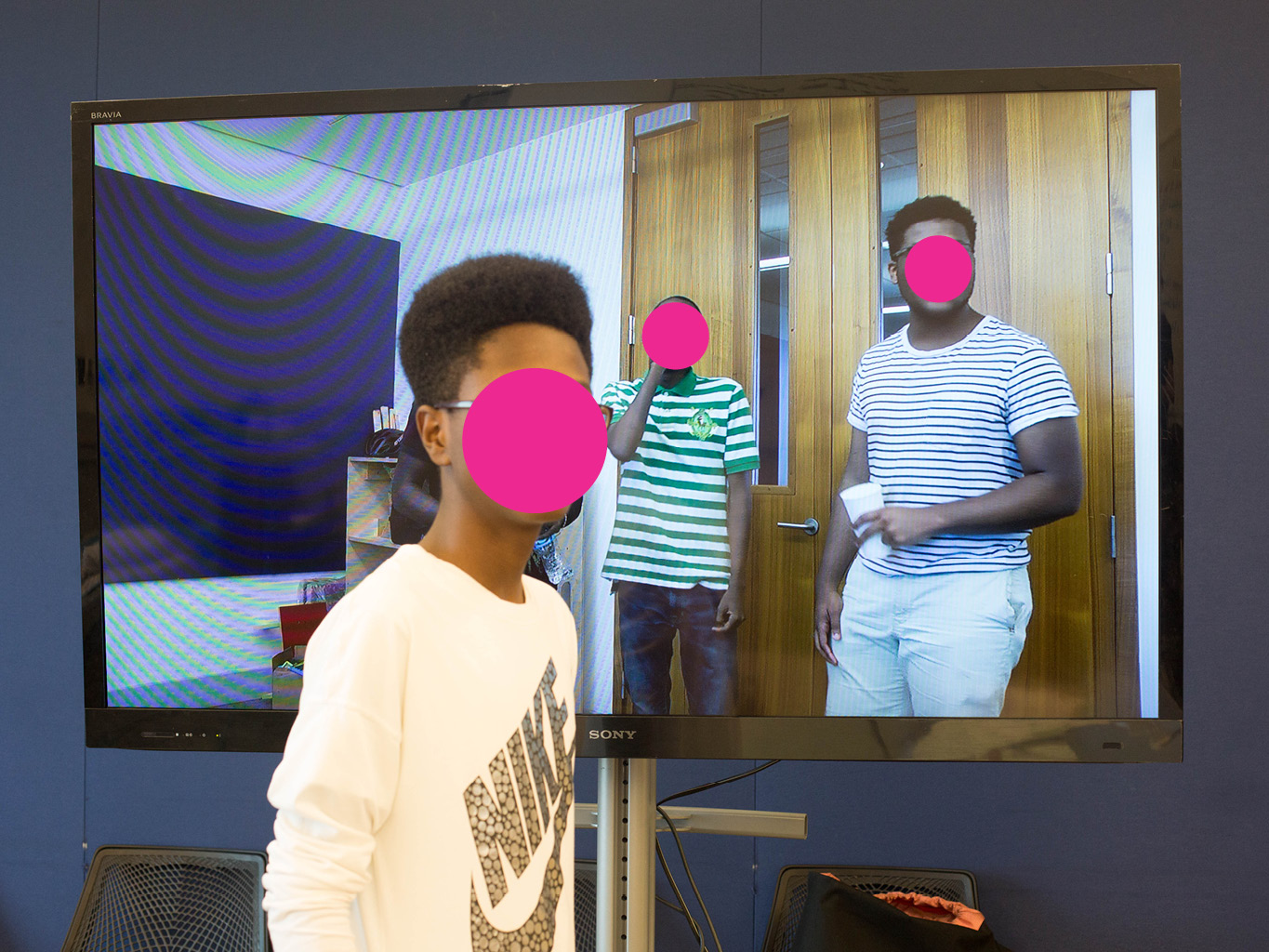
In the final week of the
Year 2 curriculum, participating adolescents worked with media scholars,
filmmakers, and staff in the theatre department at the University of Chicago to
translate their scenarios into short films. Their characters and prototypes informed
script-writing, and they engaged in workshops on storyboarding, acting,
shooting, directing, and editing. These short films were generally conceived as
advertisements for their speculative objects as a means to depict the future
scenarios.
![]()
![]()
stills from “COMMUNITY HEALING PAIR, CHICAGO 2038” / 2018
Asha Edwards, David Bonsu
Community Healing Pair, Chicago, 2038 is a wearable communication system, comprised of a AR glasses and wristband. Users can access diverse perspectives of the neighbourhood through augmented reality and make use of local communicative functions. The proposed system imagines the capacity for AR to alternate users’ views between positive and negative realities of life on the South Side—reminding residents of their neighbourhood’s rich past and present of community activism while summoning support from each other to confront ongoing struggles with state violence enacted by the police.
![]()
![]()
![]()
![]()
Stills from CLONING MASKS AND PROTECTIVE MASKS, CHICAGO 2038 / 2018
Lauren Johnson, Shurri Peterson, Nia Nobles-Vincent
Cloning Masks and Protective Masks, Chicago, 2038 animated the issue of police violence through the narrative of an inventor trying desperately to keep his son safe from police confrontations. The underlying narrative illustrates real life experiences shared by participating adolescents. Police violence creates intergenerational tensions when parents are desperate to keep their children out of harm’s way, but the young people are eager to fight for justice.
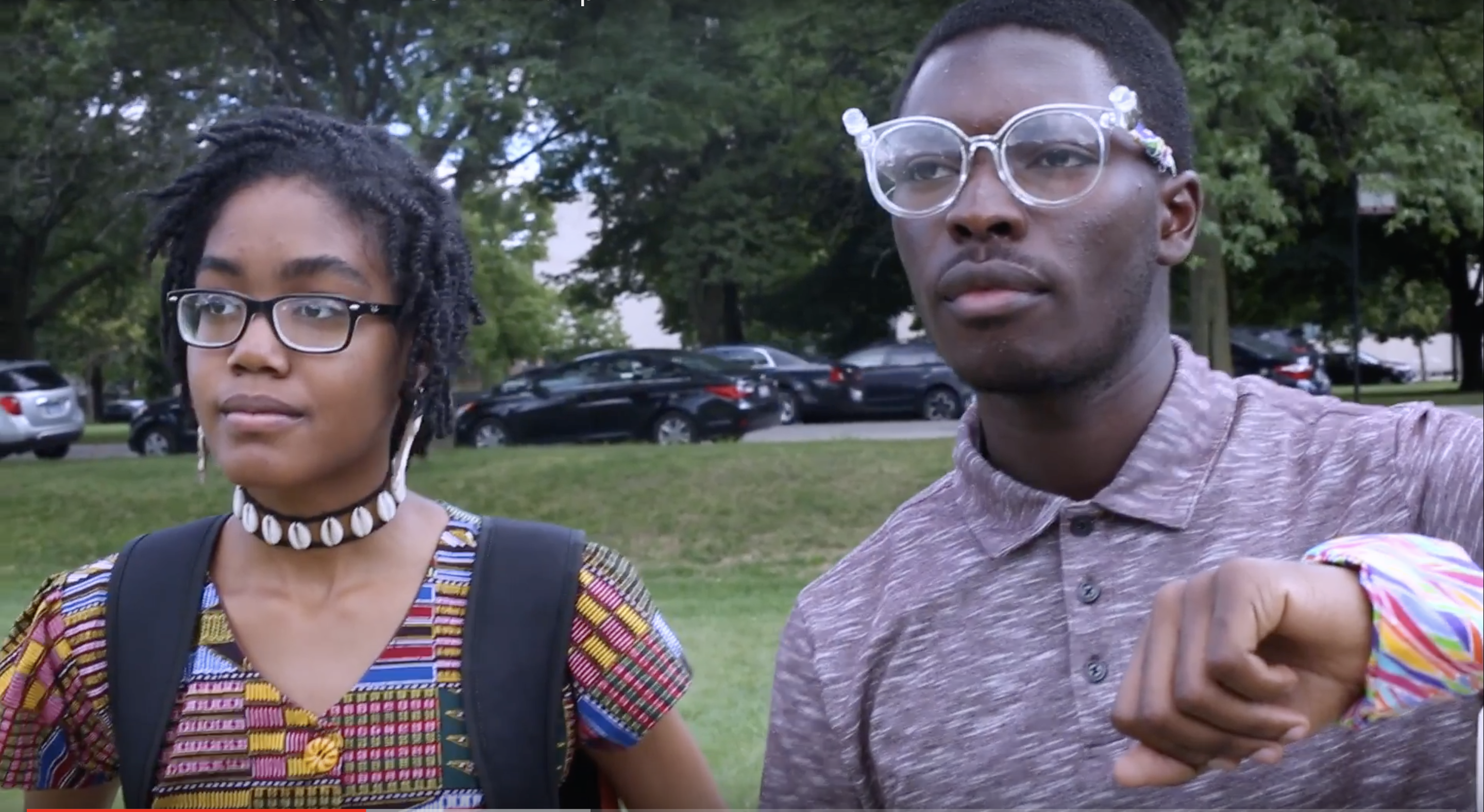
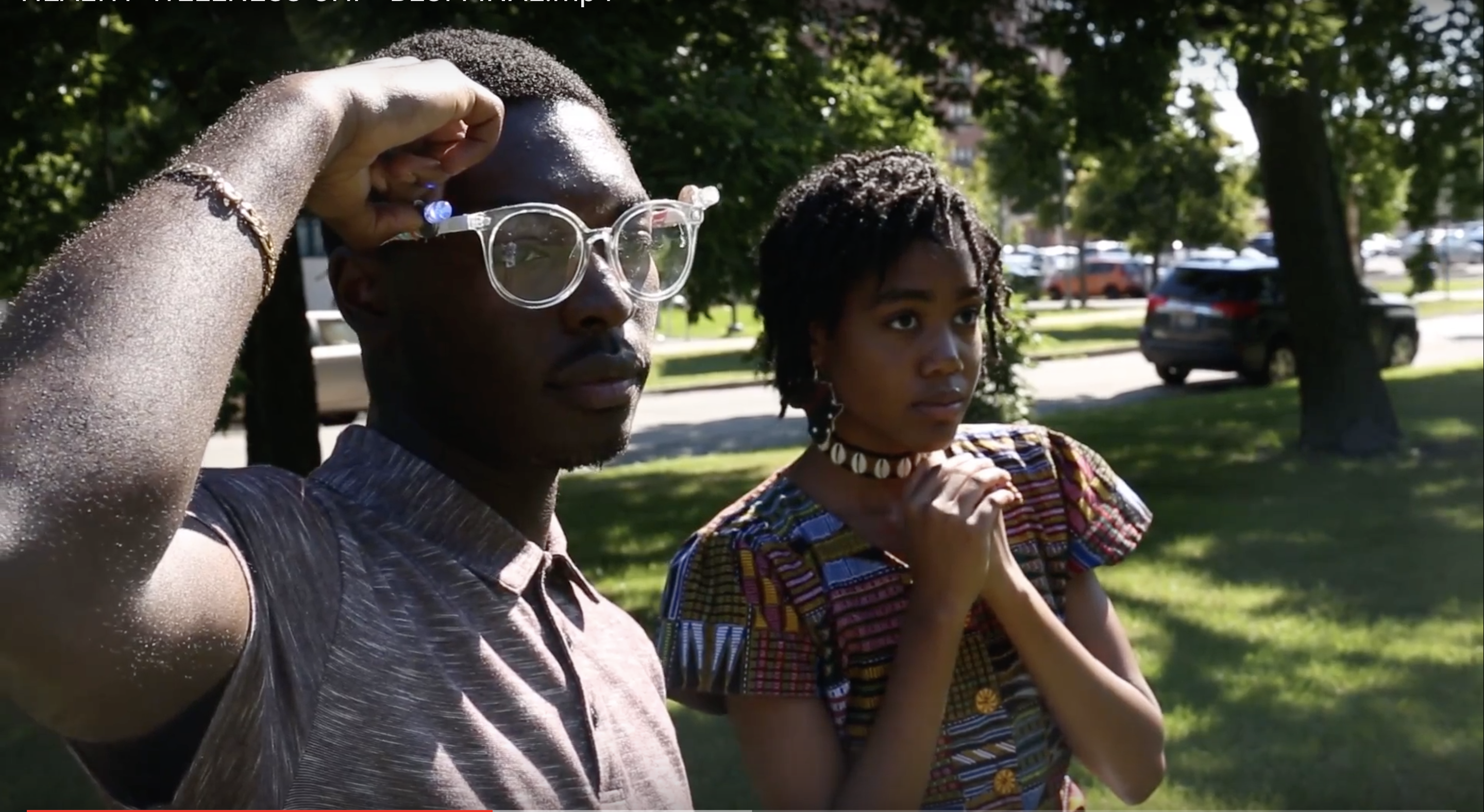
stills from “COMMUNITY HEALING PAIR, CHICAGO 2038” / 2018
Asha Edwards, David Bonsu
Community Healing Pair, Chicago, 2038 is a wearable communication system, comprised of a AR glasses and wristband. Users can access diverse perspectives of the neighbourhood through augmented reality and make use of local communicative functions. The proposed system imagines the capacity for AR to alternate users’ views between positive and negative realities of life on the South Side—reminding residents of their neighbourhood’s rich past and present of community activism while summoning support from each other to confront ongoing struggles with state violence enacted by the police.
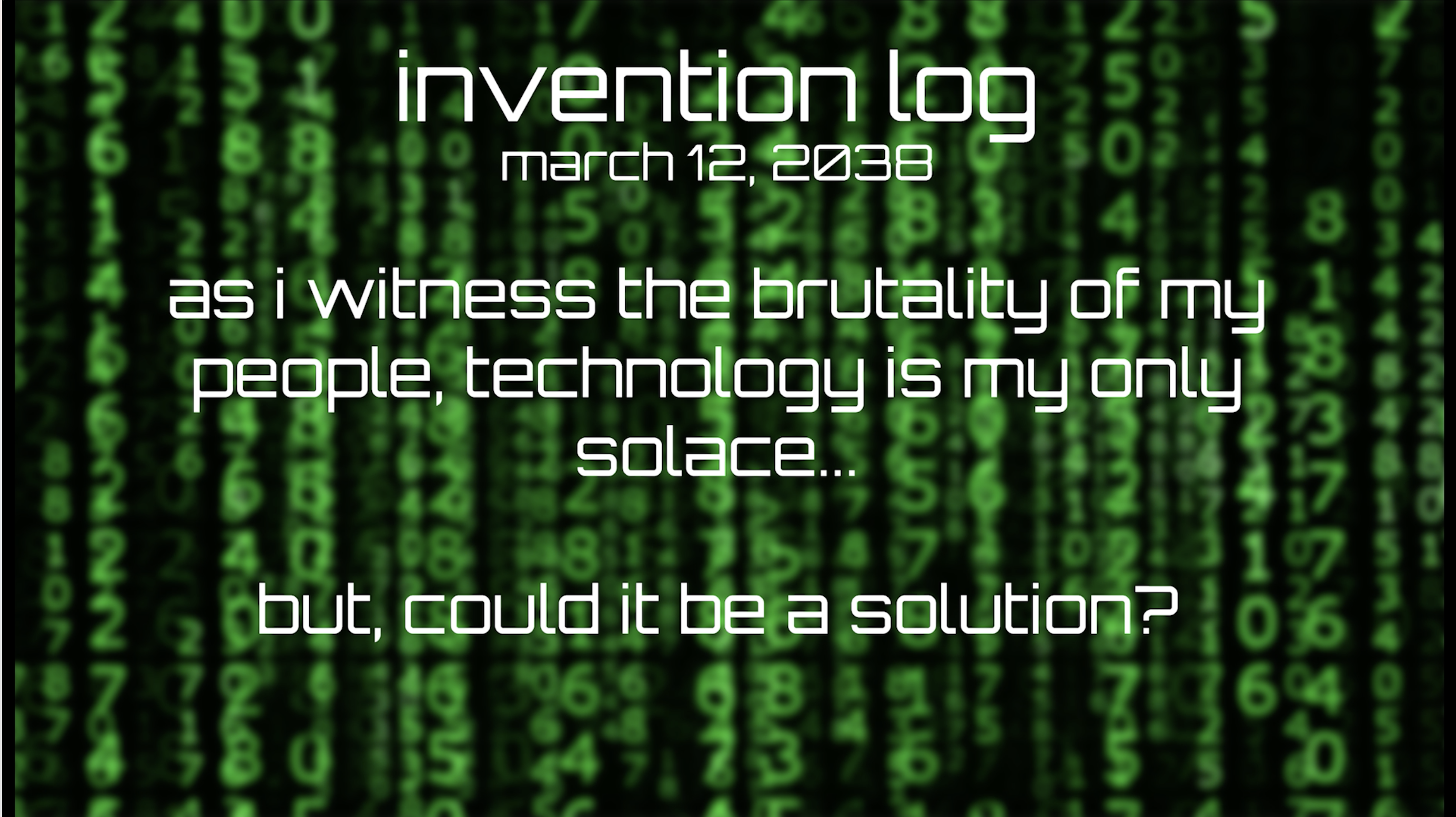
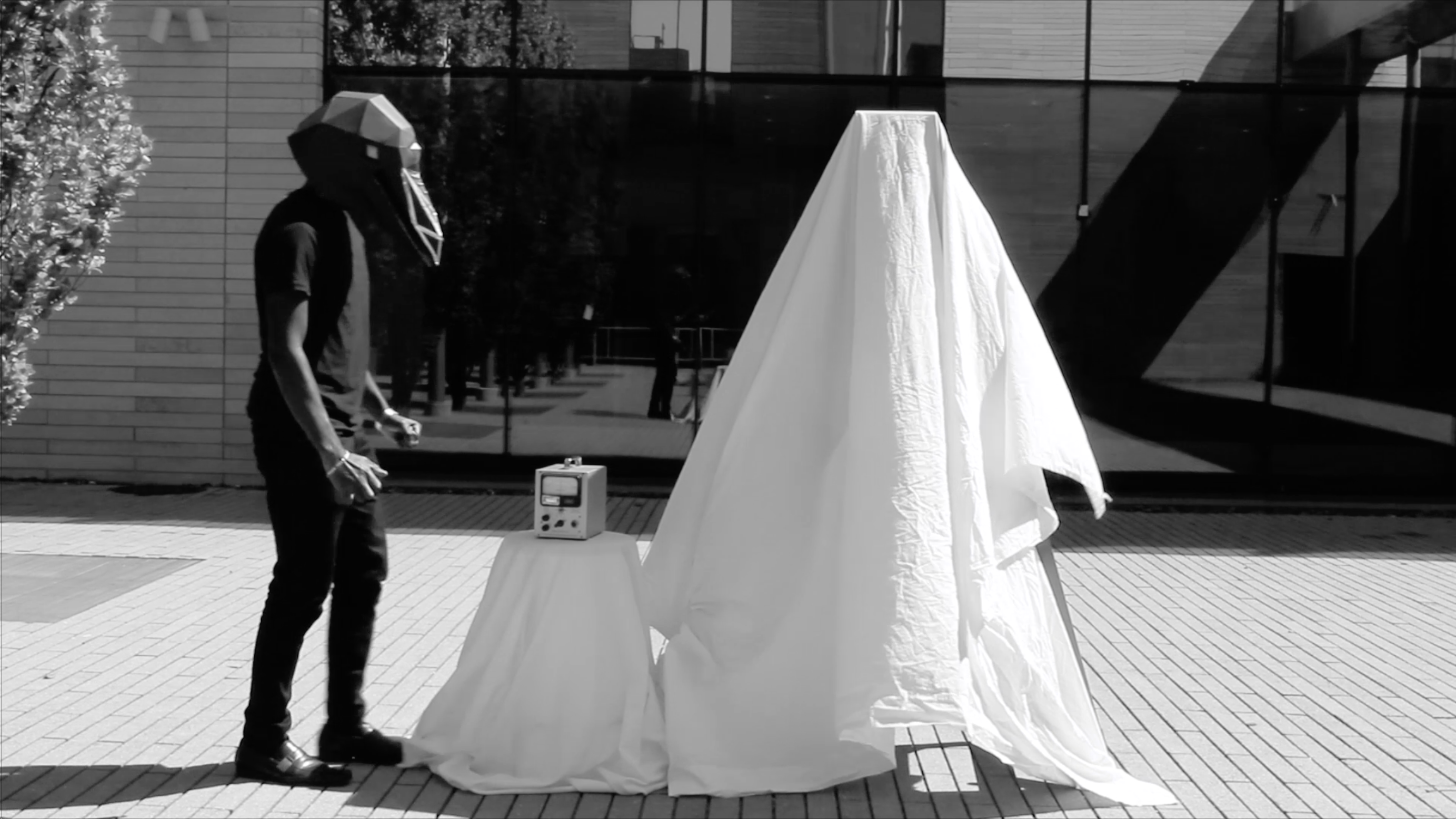
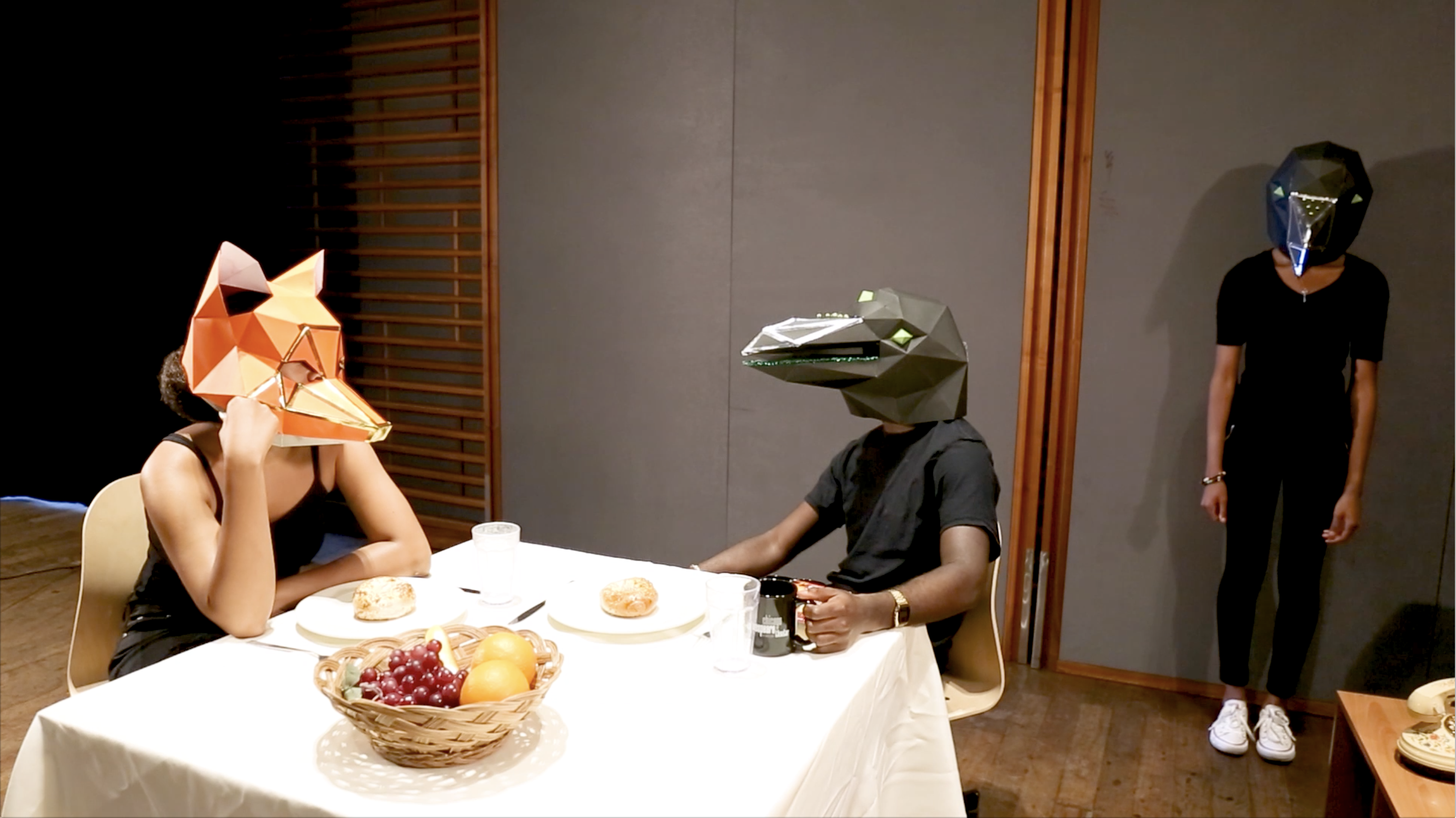

Stills from CLONING MASKS AND PROTECTIVE MASKS, CHICAGO 2038 / 2018
Lauren Johnson, Shurri Peterson, Nia Nobles-Vincent
Cloning Masks and Protective Masks, Chicago, 2038 animated the issue of police violence through the narrative of an inventor trying desperately to keep his son safe from police confrontations. The underlying narrative illustrates real life experiences shared by participating adolescents. Police violence creates intergenerational tensions when parents are desperate to keep their children out of harm’s way, but the young people are eager to fight for justice.
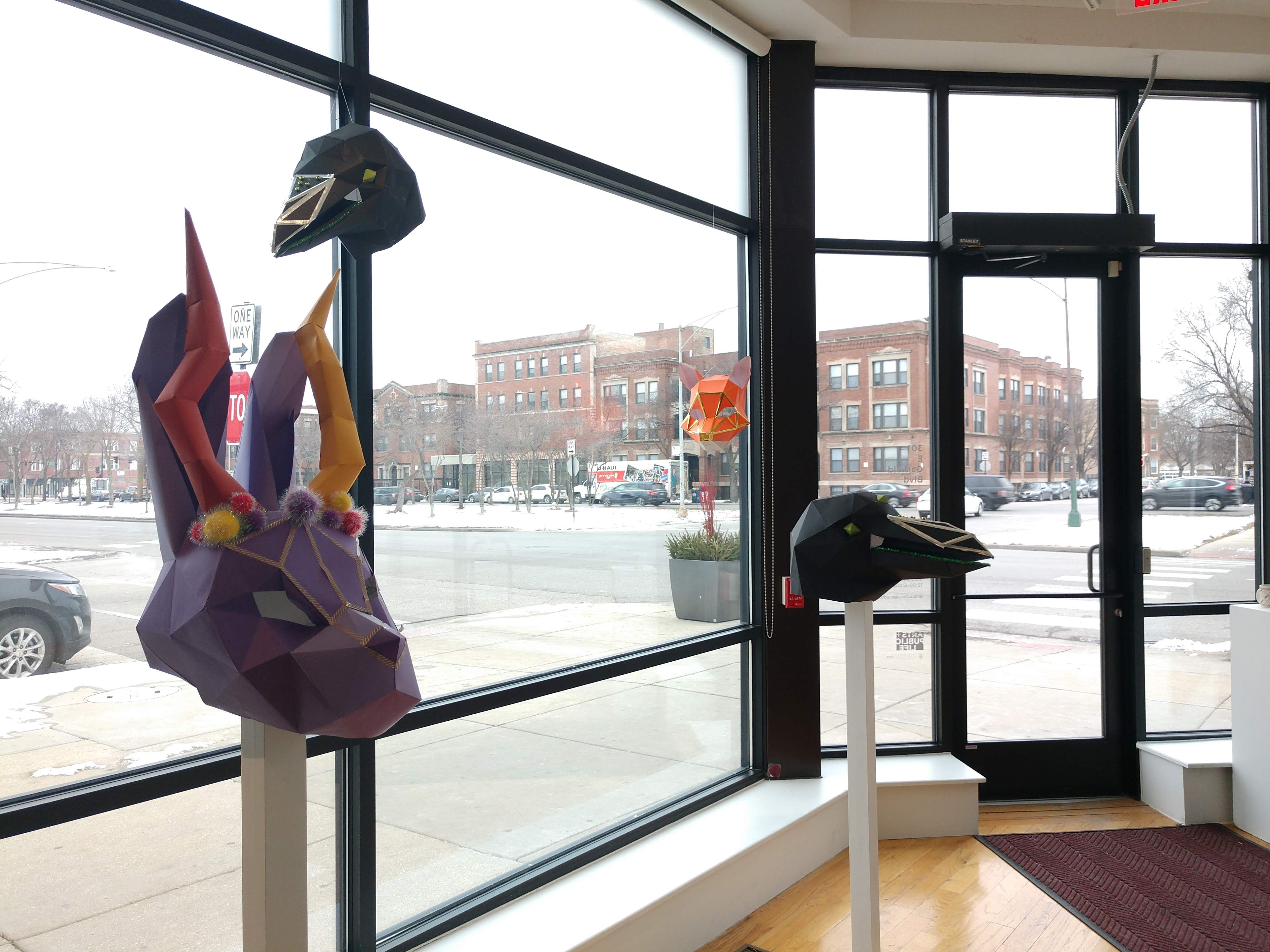
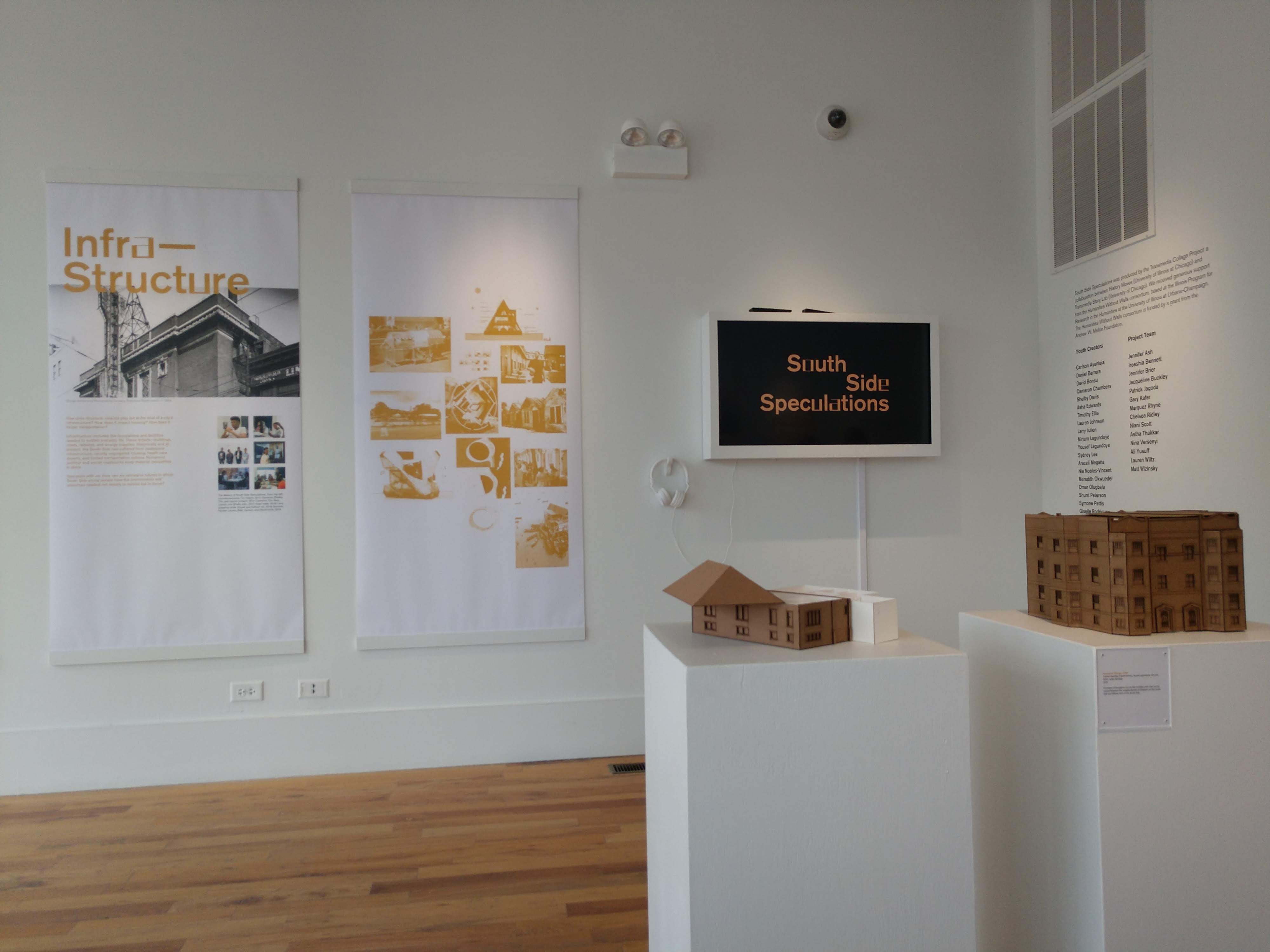

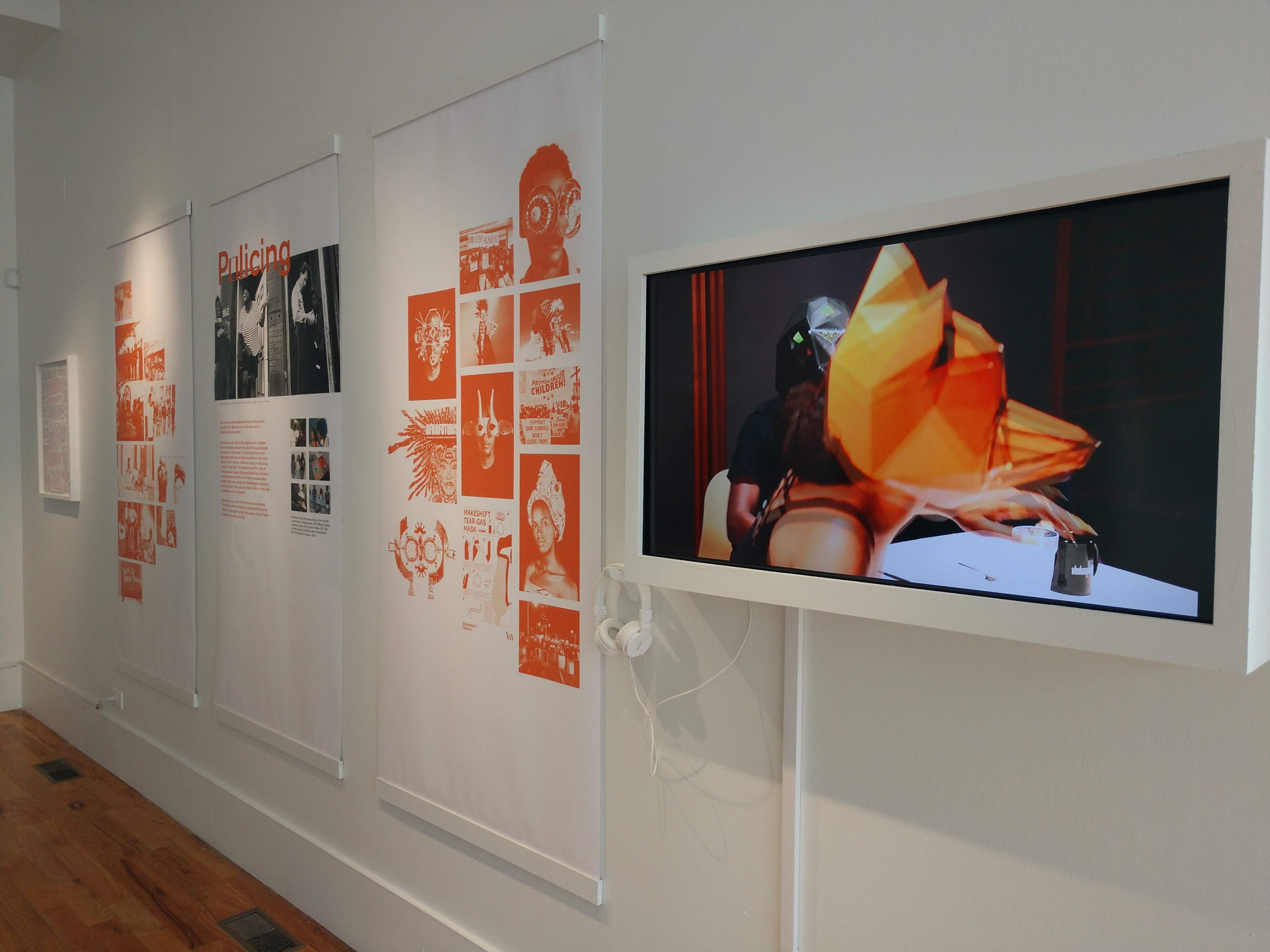
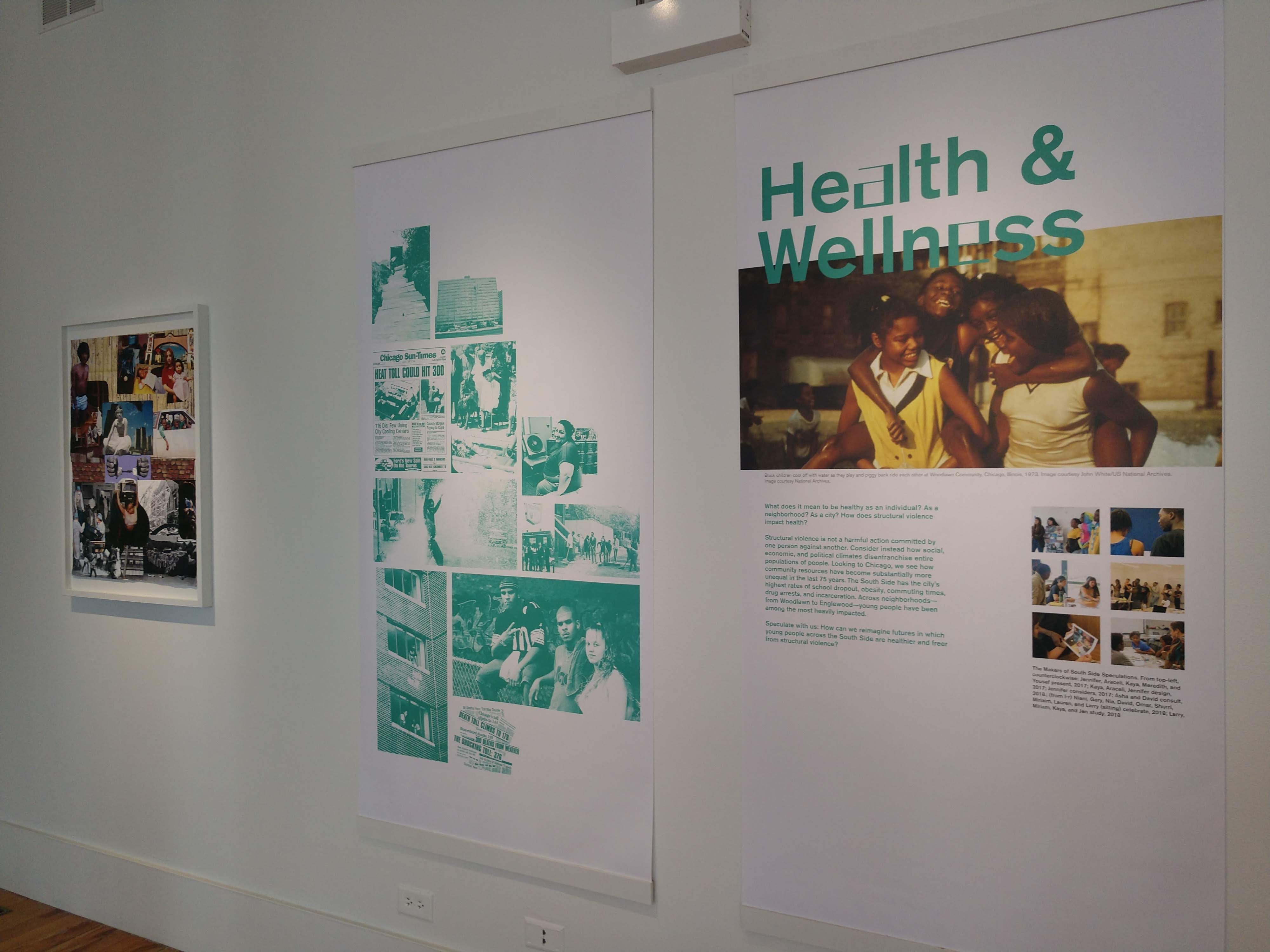
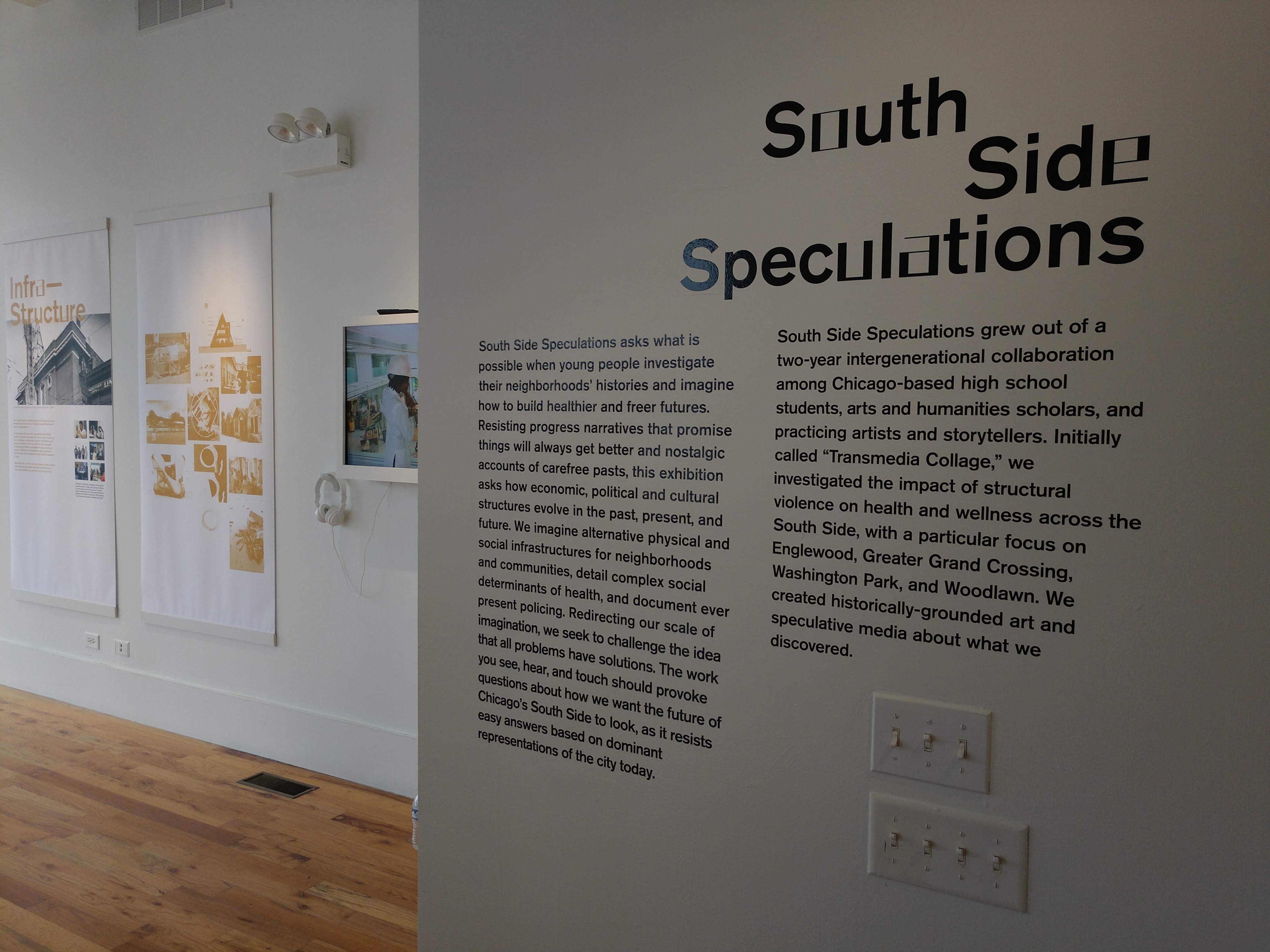
EXHIBITION DESIGN / 2018–2019
Design and implementation in collaboration with Astha Thakar, Jacqueline Buckley (University of Illinois at Chicago) and Ireashia Bennett (University of Chicago).
The project’s reulting historical collages, fictional-historical design objects, future speculative artefacts, and short films were publicly presented at multiple venues on Chicago’s South Side in 2019, in the exhibition “South Side Speculations.” This project deliberately conceived of these exhibitions as activatations of public space, producing new sites for discourse on topics that were richly and imaginatively investigated by local adolescents. This included programming of events, workshops, and panel discussions that drew together South Side residents of specific communities—each creating new opportunities to discuss the issues under consideration, including the merits of the resulting future speculations. The participating adolescents thus transformed into public speakers, docents, and topical experts. Beyond a general public audience, these events were attended by and generated participation from local high school students (the adolescents’ peers), parents and family members, and elders who participated in the oral history component. In this way, the exhibitions and their programs generated intergenerational discourse stimulated by the creative, critical work of local adolescents who participated in the summer education program.
—
The project demonstrates a move toward what has been coined “prefigurative design”: design that “prompts practitioners and researchers to both imagine alternative futures and to structure design processes to manifest them in the present” (Asad 2018). A two-summer, interdisciplinary educational experience for twenty-three adolescents was facilitated in a city that has closed over 200 public schools since 2002 (Lutton, et al 2018). The curriculum blended methods from History, Literary and Media Studies, and Design to facilitate the production of new public historical narratives plus proposals for healthier future neighbourhoods.
RELATED PUBLICATIONS
Wizinsky, M. (2019) “South Side Speculations: Designing Public Histories & Public Futures on Chicago’s South Side.” Proceedings of IASDR 2019.